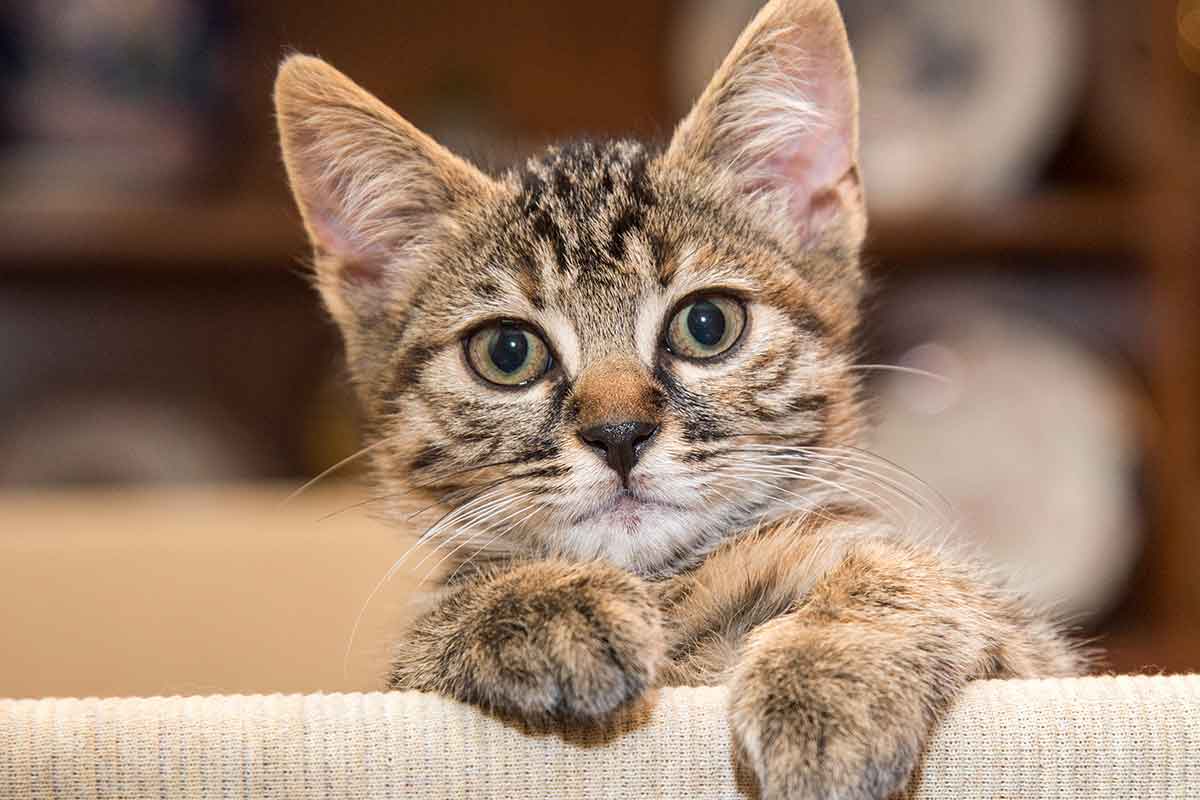Cattens: They’re not quite kittens, not quite cats. They’re tweens through teens. Adolescents. Can go from “Mommm-muh! Don’t! Won’t!” to “Mommmy?!” in five minutes. Absolute challenges in the bum. I love them at that awkward time. Sometimes, it’s fun. Often, sweet.
As we did ourselves, they’re going through changes. Watching your Noodles develop into the adult she’s going to become is like…well, how did you feel when your child began to walk? Exactly. Understanding goes a long way to enrich your cat’s development and vastly decrease stress for the two of you during this colorful period, and it’s bonding. With a little knowledge, you and your unruly teen can have a more loving, stronger relationship, because you’ll know her better. Promise.
Traditionally, this period of adolescence is considered to be between six and 12 months. I put it between four and 18 months. In my experience, ferals tend to be “savvy” earlier than owned cats.
All Those Changes!
Between four and five months, Noodles starts losing baby teeth. Gums can hurt—and perhaps because of the irritation, cattens chew more. Shoes. Papers. Carpet corners. Toys. It’s not pica (they don’t eat and swallow the non-edible item), it’s teething.
Coats go from fluff to sleek. He grooms more, which means more hairballs if you don’t help him out with regular brushing. Urine smells stronger. Nails shed sheaths more, and faster. There’s more directed energy: jumps higher, races faster, gets into cabinets, shelving, and dryers more easily, opens doors better.
Cattens announce their newly expanded presence in other ways, too: marking territory with urine (unless spayed/neutered), clawing sofas, furniture legs, and curtains, shedding old nail sheaths, so new nails can grow. It feels great. Good back and shoulder stretch. Perhaps clawing you, too.
Don’t take it personally. She’s claiming turf, which includes you. She’s working out her place in that territory. Ranking. Behaviorists don’t like to use the term “dominance,” but hierarchies do exist. Other cats around? Who’s positioned where? Scrambling for a better social position can mean picking fights with other cats. Higher ranking cats fight back to keep Noodles in her place.
Cattens appear able to distinguish prey at further distances. Territorial imperative develops further than the kittenish possessiveness with toys and food. (“Mine!”)
Play aggression rises: Noodles wants and needs to play and tussle with pals. She stalks, chases, pounces, and clutches while other resident cats join in, hide—or fight back. If it’s true meeting of two playful minds, there’s no real victim, while if there’s true fighting, there is, and you’ll hear growling.
Social play peaks. Attacking revs up with play aggression, continuing beyond four months. In between spurts of vigorous play, Noodles buzzes and snuggles, but at about six months, it’s push the envelope. Ankles, feet, hands, face—you’re no exception to Noodles’ predatory exercising.
Is she using your legs or hands as playthings? Ideally, catch her before she latches on and redirect her calmly to a toy to work out her play. If she is already attached to you, freeze and remain calm and quiet. The more excited and active you are, the more excited she will be. Redirect her to a toy by tossing it or enticing her to get it. Teaching a “get your toy” cue can make this even easier.
Love Me, Love Me Not?
The human brain changes and develops hugely at this age, but we know astonishingly little about mental development in a feline. We know her brain is still catching up to the growth spurts, as she increasingly explores her independence and her skills. We see it in her manner. Former bonds can break, as Noodles juggles friendships, alliances, enemies.
We observe cattens developing independent relationships, some combative, some friendly, some tolerating, with both animal and human household members. This can mean shunning a littermate or feeling easier with another cat previously seen as suspect. If they used to love cuddling; now it’s not unusual for a catten to pull away. When you stroke her, you might get a chomp and scratch, instead.
Stay!
Be patient, as you were or would be with your own human teen. Relate to your catten, be gentle with her, stay with the process.
Keep praising! Praise and treats for the good things Noodles does, like playing with the toy you bought, not nibbling at feet or hands. Aversives—sharp noises, water bottle sprays, buzzy mats—ramp up fear and aggression, alienate Noodles, don’t get to the motivation—and don’t stop the behavior when you’re not there. Reward the good stuff, and try to ignore or redirect the bad.
From kittens to cattens to adults, raise them with consistent, constant love and understanding. Who they’ve been and are now, with your care, is who they’ll become. It’s an interesting time!
This article was reviewed/edited by board-certified veterinary behaviorist Dr. Kenneth Martin and/or veterinary technician specialist in behavior Debbie Martin, LVT.








